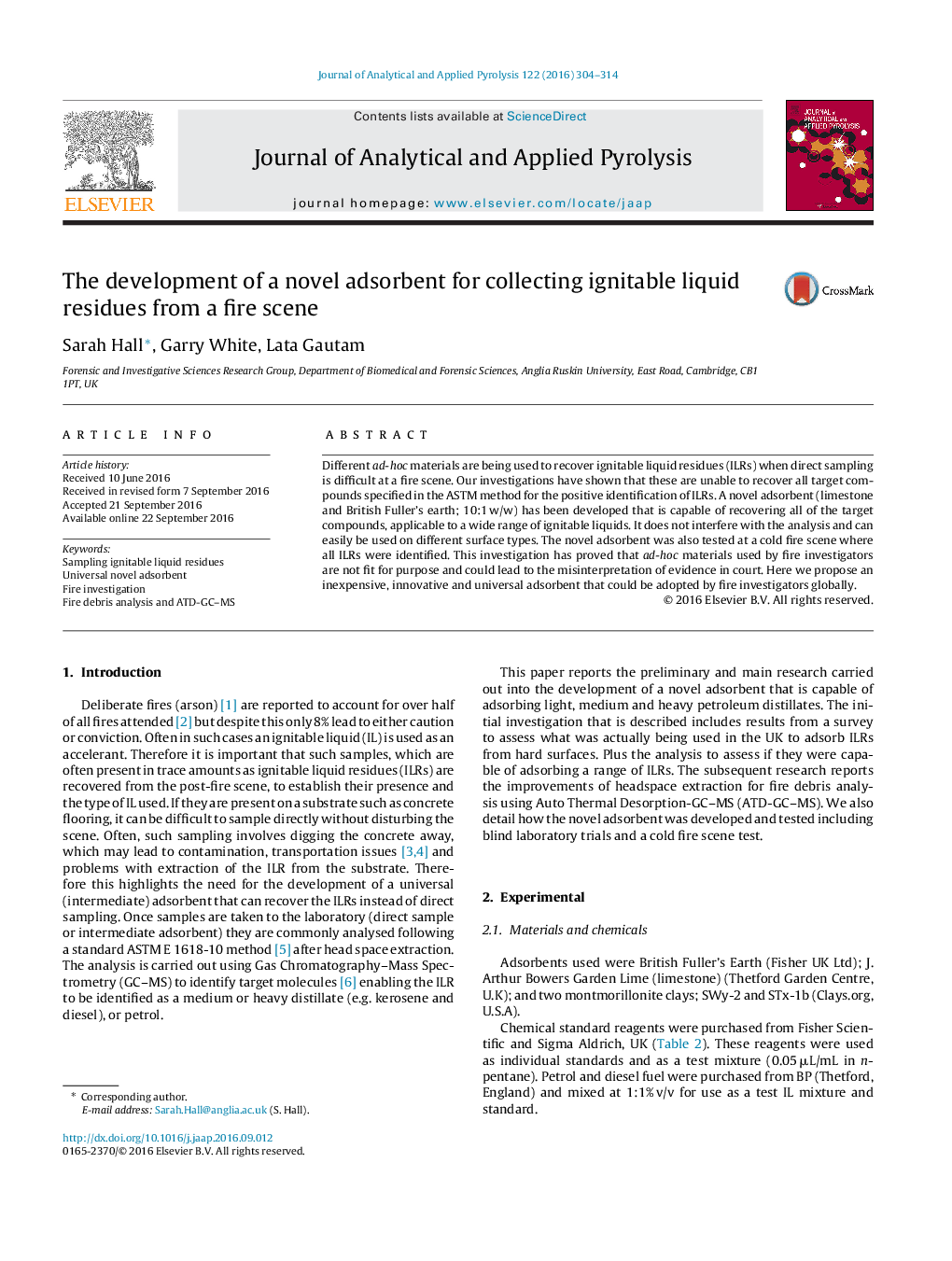| Article ID | Journal | Published Year | Pages | File Type |
|---|---|---|---|---|
| 5134782 | Journal of Analytical and Applied Pyrolysis | 2016 | 11 Pages |
â¢The use of a novel adsorbent to sample ignitable liquid residues from hard surfaces or difficult to reach areas in a fire scene.â¢The development of a novel adsorbent (limestone and British Fuller's earth; 10:1% w/w) that is capable of adsorbing a wide range compounds from ethanol to docosane for the positive identification of ignitable liquids as tested in blind laboratory trials and a cold fire scene.â¢The novel adbsorbent is economical, easy to use and collect, not affected by water suppression and does not interefere with fire investigation protocols.â¢Suggested improvements of temperature (90 °C) and times (6-9 h) using Tenax TA® and ATD-GC-MS split flow setting of 40 mL/min for the analysis of fire debris to include heavier compounds (n-C24).
Different ad-hoc materials are being used to recover ignitable liquid residues (ILRs) when direct sampling is difficult at a fire scene. Our investigations have shown that these are unable to recover all target compounds specified in the ASTM method for the positive identification of ILRs. A novel adsorbent (limestone and British Fuller's earth; 10:1Â w/w) has been developed that is capable of recovering all of the target compounds, applicable to a wide range of ignitable liquids. It does not interfere with the analysis and can easily be used on different surface types. The novel adsorbent was also tested at a cold fire scene where all ILRs were identified. This investigation has proved that ad-hoc materials used by fire investigators are not fit for purpose and could lead to the misinterpretation of evidence in court. Here we propose an inexpensive, innovative and universal adsorbent that could be adopted by fire investigators globally.
